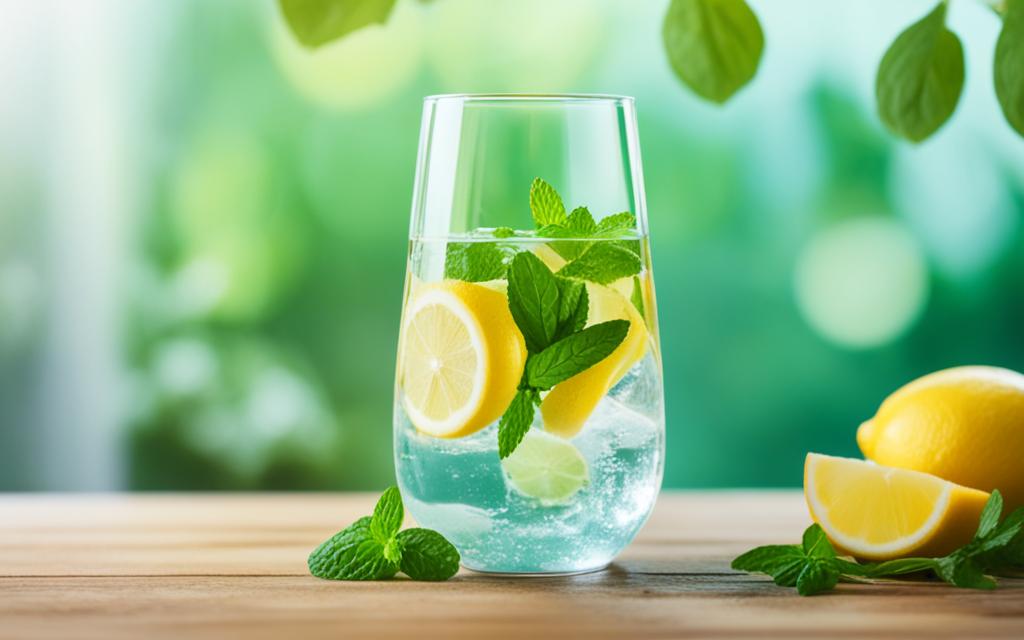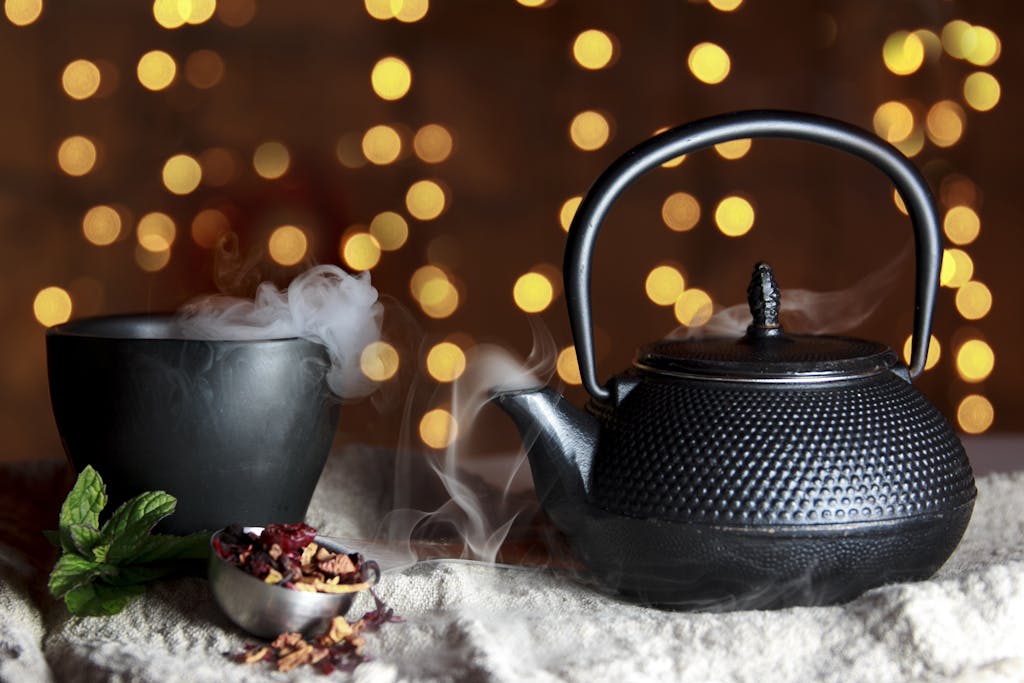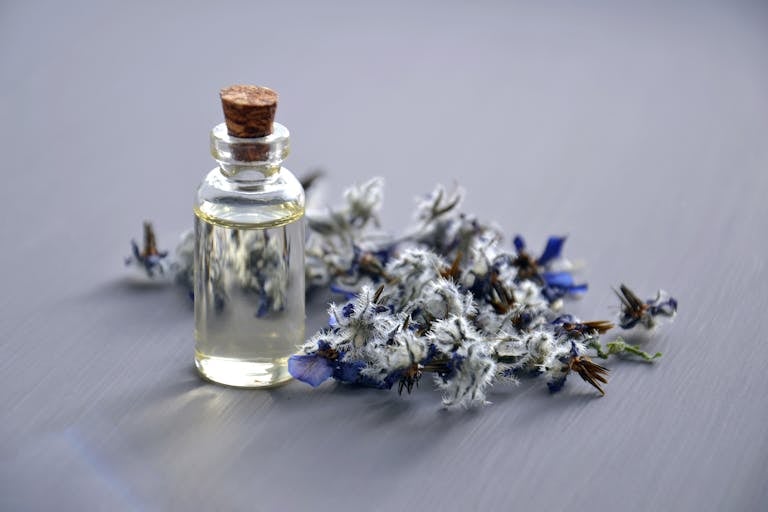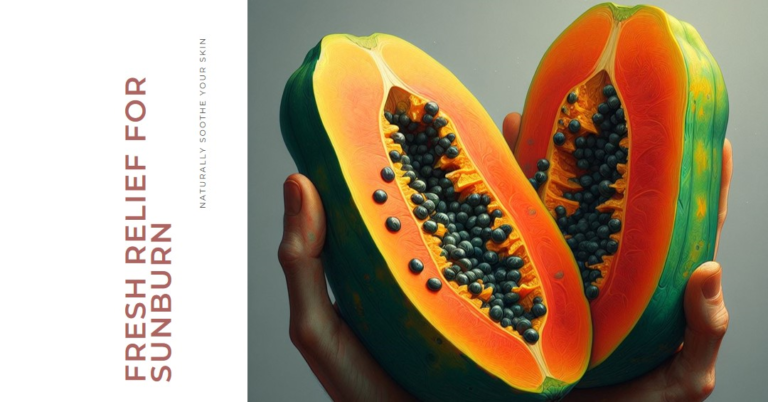Body Detox for Glowing Skin: Unveiling the Connection From Within
In our quest for healthy, radiant skin, we often turn to a multitude of skincare products. However, what if the secret to achieving that coveted glow lies within, through a process known as body detoxification? In this comprehensive guide, we’ll explore the intricate relationship between detoxing the body and achieving optimal skin health.
Understanding Body Detox: What Does it Entail?
Body detox, is the process of eliminating toxins and impurities from the body. This can be achieved through various methods, including dietary changes, hydration, and lifestyle adjustments. As toxins are expelled from the body, several organs, such as the liver, kidneys, and skin, play crucial roles in this natural detoxification process.
The Skin as a Reflection of Internal Health:
Our skin, being the largest organ, often acts as a mirror reflecting our internal health. When our bodies are burdened with toxins, it can manifest on the skin in the form of acne, dullness, or inflammation. By addressing the root cause through detoxification, we may witness a transformative effect on our skin.

How Body Detoxing Impacts Skin Health:
1. Clearing Acne and Blemishes:
– Detoxification helps to regulate sebum production and reduce inflammation, leading to a clearer complexion. The elimination of toxins aids in preventing clogged pores, one of the primary contributors to acne.
2. Boosting Hydration:
– Proper hydration is essential for skin health. Detoxing encourages the consumption of water-rich foods and beverages, contributing to well-hydrated and plump skin.
3. Reducing Inflammation:
– Inflammatory skin conditions, such as eczema or psoriasis, may be alleviated through detoxification. Removing inflammatory agents from the body can lead to a calmer, more balanced complexion.
4. Minimizing Fine Lines and Wrinkles:
– Detoxing supports the production of collagen, a crucial protein that maintains skin elasticity. By promoting collagen synthesis, detoxification can help reduce the appearance of fine lines and wrinkles.
5. Enhancing Radiance:
– When the body is free from excess toxins, the skin is more likely to radiate a healthy glow. Detoxing contributes to improved blood circulation, ensuring vital nutrients reach the skin cells.
Practical Steps for Body Detox:
A. Hydrate Adequately:
– Increase water intake and incorporate hydrating foods, such as cucumbers and watermelon, into your diet.
The amount of water a person should drink daily for detoxification can vary based on factors such as age, sex, weight, activity level, and overall health. While there’s no one-size-fits-all answer, a commonly recommended guideline is the “8×8 rule,” which suggests drinking eight 8-ounce glasses of water a day, totaling about 2 liters or half a gallon.
However, individual hydration needs may differ. Some experts suggest a daily intake based on body weight, recommending about 30 to 35 milliliters of water per kilogram (or about 0.5 to 1 ounce per pound) of body weight. For example, a person weighing 68 kilograms (150 pounds) might aim for 2,040 to 2,380 milliliters (68 to 80 ounces) of water per day.
Detoxification primarily occurs through the kidneys and liver, and adequate water intake supports these organs in flushing out toxins. Staying well-hydrated helps maintain proper kidney function, enabling the efficient elimination of waste products through urine. Additionally, water supports various bodily functions, including digestion and skin health.
It’s essential to pay attention to individual needs, especially in situations that may increase water requirements, such as intense physical activity, hot weather, or certain health conditions. Thirst is a good indicator of hydration needs, and the color of urine can also provide clues; light yellow or pale straw color generally indicates proper hydration.
Ultimately, while water is crucial for supporting the body’s natural detoxification processes, balance is key. Consuming excessive amounts of water in a short period can lead to a condition called hyponatremia, where sodium levels in the body become dangerously low. Therefore, it’s advisable to spread water intake throughout the day and adjust based on personal factors and circumstances. If you have specific health concerns or conditions, it’s always wise to consult with a healthcare professional for personalized advice.
B. Cleanse with Nutrient-Rich Foods:
– Include detoxifying foods like leafy greens, berries, and cruciferous vegetables that support the liver’s natural cleansing functions.
1. Lemons
– Lemons are rich in vitamin C and antioxidants, which support the liver in detoxifying the body. Start your day with warm lemon water to kickstart your metabolism and aid digestion.

Body Detox Recipe:
– Ingredients:
– 1 lemon, sliced
– 1-inch ginger root, sliced
– 1-2 liters of water
– Instructions:
– Combine lemon slices and ginger in a jug.
– Fill the jug with water.
– Let it infuse for a few hours or overnight.
– Drink throughout the day.
2. Leafy Greens:
– Leafy greens like kale, spinach, and chard are packed with chlorophyll, which helps eliminate toxins from the bloodstream.
Detox Recipe: Green Smoothie
– Ingredients:
– 1 cup kale or spinach
– 1/2 cucumber
– 1/2 green apple
– 1/2 lemon, juiced
– 1 cup water or coconut water
– Ice cubes (optional)
– Instructions:
– Blend all ingredients until smooth.
– Enjoy as a refreshing and nutrient-packed smoothie.
3. Berries:
– Berries, such as blueberries, strawberries, and raspberries, are high in antioxidants that help combat oxidative stress and inflammation.
Detox Recipe: Berry Detox Salad
– Ingredients:
– Mixed berries (blueberries, strawberries, raspberries)
– Spinach or arugula
– Nuts (almonds or walnuts)
– Feta cheese (optional)
– Balsamic vinaigrette dressing
– Instructions:
– Toss all ingredients together in a bowl.
– Drizzle with balsamic vinaigrette.
– Enjoy as a light and detoxifying salad.

4. Beets:
– Beets contain betalains, which support the liver in breaking down toxins.
Detox Recipe: Beet and Carrot Juice
– Ingredients:
– 1 beet, peeled and chopped
– 2 carrots, chopped
– 1 apple, cored and chopped
– 1-inch ginger root
– Instructions:
– Run all ingredients through a juicer.
– Stir and drink immediately for a nutrient-packed detox beverage.
5. Avocado:
– Avocado is rich in fiber and healthy fats, supporting digestive health and promoting a feeling of fullness.
Detox Recipe: Avocado and Mango Salsa
– Ingredients:
– 1 ripe avocado, diced
– 1 ripe mango, diced
– Red onion, finely chopped
– Fresh cilantro, chopped
– Lime juice
– Salt and pepper to taste
– Instructions:
– Mix all ingredients in a bowl.
– Serve as a refreshing salsa with whole-grain crackers or as a topping for grilled chicken or fish.
Incorporating these fruits and vegetables into your diet can contribute to a nutrient-rich and detoxifying eating plan. Remember to maintain a balanced and varied diet, stay hydrated, and consult with a healthcare professional if you have specific dietary concerns or health conditions.
C. Sweat it Out:
– Engage in regular exercise to stimulate the lymphatic system and promote sweating, which aids in toxin elimination.
A well-designed exercise plan can effectively stimulate the lymphatic system, promoting detoxification and overall health. The lymphatic system relies on muscle contractions to move lymph fluid through the body. Incorporate the following exercises into your routine to enhance lymphatic flow:
1. Rebounding:
– Exercise: Jumping on a trampoline or rebounder.
Duration: 10-15 minutes.
– How it helps: Rebounding is a low-impact exercise that engages multiple muscle groups, promoting circulation and encouraging lymphatic drainage.
2. Deep Breathing Exercises:
– Exercise: Diaphragmatic breathing.
– Duration: 5-10 minutes.
– How it helps: Deep breathing enhances oxygen flow and engages the diaphragm, which facilitates the movement of lymphatic fluid through the body.
3. Jumping Jacks:
– Exercise: Traditional jumping jacks.
– Duration: 5-10 minutes.
– How it helps: Jumping jacks stimulate the cardiovascular system, encouraging blood circulation and lymphatic flow.
4. Yoga:
– Exercise: Yoga poses, especially those involving inversions (e.g., downward dog, legs up the wall).
– Duration: 20-30 minutes.
– How it helps: Yoga promotes flexibility, deep breathing, and specific poses can facilitate lymphatic drainage.
5. Arm Swings:
– Exercise: Stand with feet shoulder-width apart. Swing your arms forward and backward.
– Duration: 5-10 minutes.
– How it helps: Arm swings engage the shoulder and chest muscles, promoting lymphatic flow in the upper body.
6. Walking:
– Exercise: Brisk walking.
– Duration: 30-45 minutes.
– How it helps: Walking engages the muscles in the legs and promotes overall circulation, supporting lymphatic drainage.
7. Resistance Training:
– Exercise: Weightlifting or resistance band exercises.
– Duration: 20-30 minutes.
– How it helps: Strength training helps activate muscle groups, encouraging lymphatic circulation.
8. Swimming:
– Exercise: Swimming or water aerobics.
– Duration: 20-30 minutes.
– How it helps: The buoyancy of water reduces impact on joints while engaging the entire body in rhythmic movements.
9. Leg Exercises:
– Exercise: Leg lifts, squats, or lunges.
– Duration: 10-15 minutes.
– How it helps: Working the lower body muscles helps stimulate lymphatic flow from the lower extremities.
Tips:
– Stay hydrated to support optimal lymphatic function.
– Wear compression garments during exercise to aid in lymphatic drainage.
– Include a combination of aerobic and resistance exercises for comprehensive benefits.
Always consult with a healthcare professional before starting a new exercise program, especially if you have pre-existing health conditions or concerns.

D. Prioritize Sleep:
– Quality sleep is essential for skin regeneration. Establish a consistent sleep routine to support overall wellness.
Quality sleep is not just a luxury; it’s a fundamental requirement for overall health and well-being, and its impact on skin regeneration is particularly noteworthy. During sleep, the body undergoes a complex process of repair, restoration, and regeneration, affecting various physiological functions, including the health and appearance of the skin.
Here are key points to consider about the relationship between quality sleep and skin regeneration:
1. Cellular Repair and Growth:
– During the deep stages of sleep, the body’s production of growth hormone increases. This growth hormone plays a crucial role in stimulating cell repair and regeneration, including skin cells. Adequate sleep provides the necessary time for these processes to occur, contributing to healthier and more youthful-looking skin.
2. Collagen Production:
– Collagen, a protein responsible for skin elasticity and firmness, is predominantly produced during sleep. Lack of sleep or poor sleep quality can hinder collagen production, potentially leading to the development of fine lines and wrinkles. Quality sleep supports the body’s ability to maintain optimal collagen levels.
3. Reduction of Inflammation:
– Chronic inflammation is associated with various skin conditions, including acne and psoriasis. Quality sleep helps regulate the body’s inflammatory responses. Lack of sleep can elevate inflammatory markers, potentially exacerbating skin issues and hindering the healing process.
4. Blood Flow and Circulation:
– Sleep is essential for proper blood flow and circulation throughout the body, including the skin. Improved circulation ensures that skin cells receive an adequate supply of nutrients and oxygen, promoting a healthy and vibrant complexion.
5. Stress Hormones and Skin Conditions:
– Sleep deprivation can elevate stress hormones such as cortisol. Increased cortisol levels are linked to skin problems, including acne and eczema. Quality sleep helps maintain hormonal balance, supporting skin health and minimizing the likelihood of stress-related skin issues.
6. Dark Circles and Puffiness:
– Insufficient sleep can contribute to the development of dark circles and puffiness around the eyes. During quality sleep, the body’s fluid balance is regulated, reducing the appearance of under-eye bags and promoting a more refreshed look.
7. Enhanced Skin Barrier Function:
– The skin barrier, which protects against environmental stressors and pollutants, undergoes repair and strengthening during sleep. A well-rested body is better equipped to maintain an effective skin barrier, preventing moisture loss and promoting a healthier complexion.

Incorporating good sleep hygiene practices, such as maintaining a consistent sleep schedule, creating a comfortable sleep environment, and managing stress, is essential for optimizing skin regeneration. While skincare products play a vital role, they complement the natural processes that occur during quality sleep. Prioritizing sufficient and restful sleep is a holistic approach to nurturing not only overall health but also the radiant and revitalized appearance of the skin.
Consider Detoxifying Teas:
– Herbal teas like dandelion or green tea can support liver function and aid in the elimination of toxins.
Certainly, herbal teas like dandelion and green tea are renowned for their potential to support liver function and contribute to the body’s natural detoxification processes.
Dandelion Tea:
Benefits:
1. Liver Support: Dandelion root is believed to stimulate the liver by promoting bile production. Bile plays a crucial role in digestion and the elimination of toxins from the liver.
2. Diuretic Properties: Dandelion tea acts as a natural diuretic, promoting increased urine production. This can aid in the elimination of excess fluids and waste from the body.
How to Make Dandelion Tea:
Ingredients:
– 1 tablespoon dried dandelion root (or 2 tablespoons fresh roots)
– 1 cup boiling water
Instructions:
1. Place the dried or fresh dandelion root in a teapot or tea infuser.
2. Pour boiling water over the roots.
3. Allow it to steep for 10-15 minutes.
4. Strain the tea and enjoy. You may sweeten it with honey or add a splash of lemon if desired.
Green Tea:
Benefits:
1. Rich in Antioxidants: Green tea is abundant in catechins, which are antioxidants that help protect cells from damage caused by free radicals.
2. Liver Protection: Some studies suggest that green tea may have protective effects on the liver, promoting its health and aiding in the detoxification process.
How to Make Green Tea:
Ingredients:
– 1 teaspoon green tea leaves or 1 green tea bag
– 1 cup hot water (not boiling)
Instructions:
1. Place green tea leaves or a tea bag in a cup.
2. Pour hot water over the tea leaves or bag.
3. Allow it to steep for 2-3 minutes for a milder flavor or up to 5 minutes for a stronger taste.
4. Remove the tea leaves or bag and enjoy. You may add honey or a slice of lemon if desired.

Additional Tips:
– It’s advisable to consult with a healthcare professional before incorporating herbal teas, especially if you have pre-existing health conditions or are pregnant.
– Consistency is key. For optimal benefits, consider incorporating these herbal teas into your routine regularly.
– Stay hydrated with water alongside herbal teas to support overall hydration.
Including dandelion tea and green tea as part of a balanced and healthy lifestyle can be a delightful way to support liver health and promote the body’s natural detoxification mechanisms. As with any herbal remedies, it’s essential to be mindful of individual responses and consult with a healthcare provider for personalized advice.
Closing Thoughts:
While skincare products play a crucial role in maintaining healthy skin, the significance of internal wellness cannot be overstated. Embracing a holistic approach to skincare by incorporating body detoxification practices can lead to a complexion that not only looks good but reflects overall well-being. So, embark on this journey towards radiant skin from within – your body will thank you for it!

Try This! Food as Medicine








Such an informative and helpful article on health tips. Thank you for sharing. 🤗
Pastor Natalie (Examine This Moment)
Letstakeamoment.com
Thank you for your kind words.